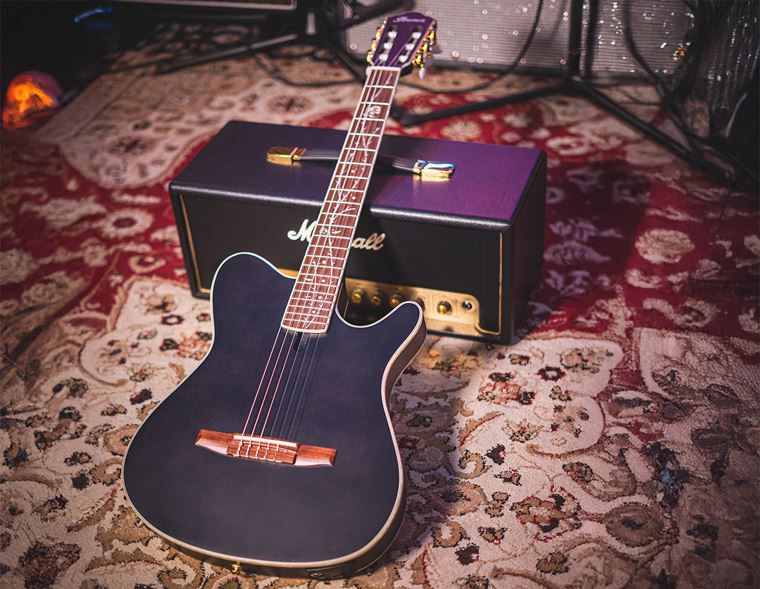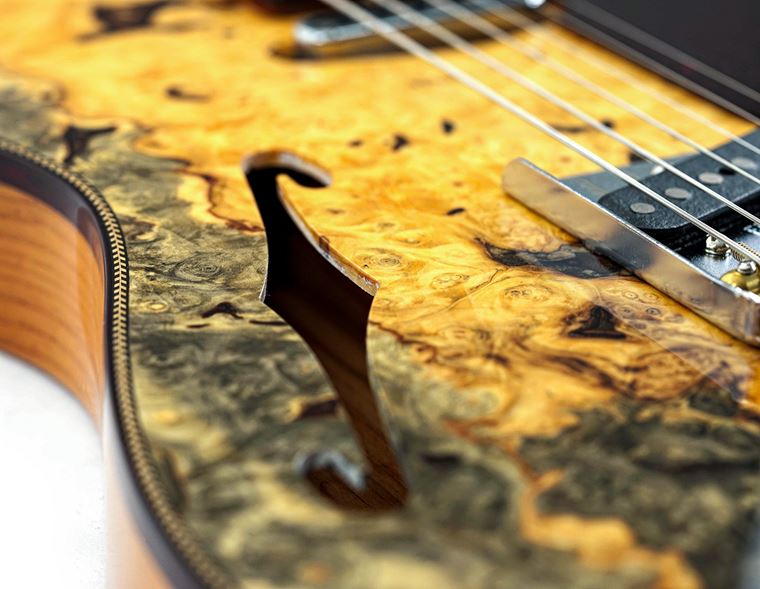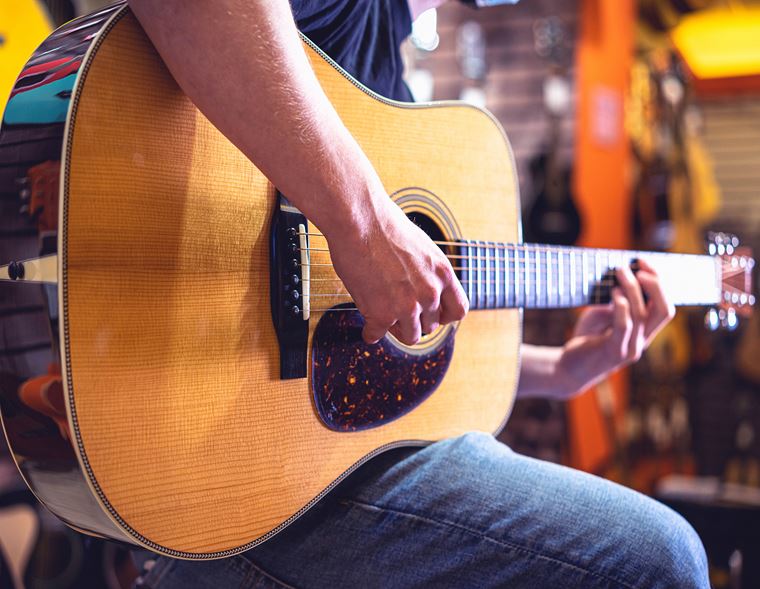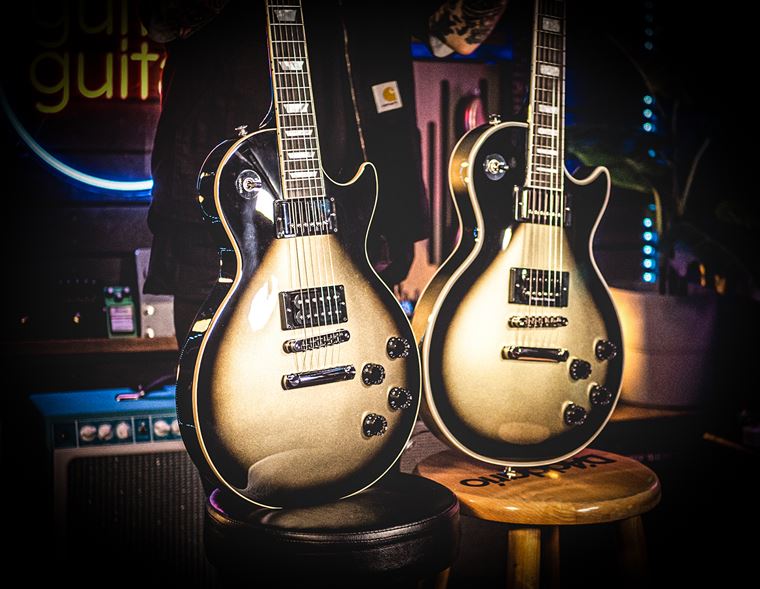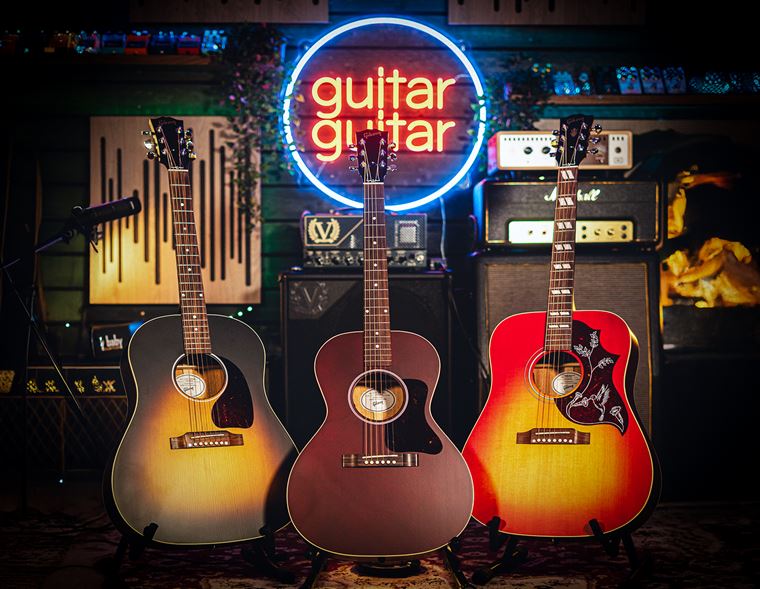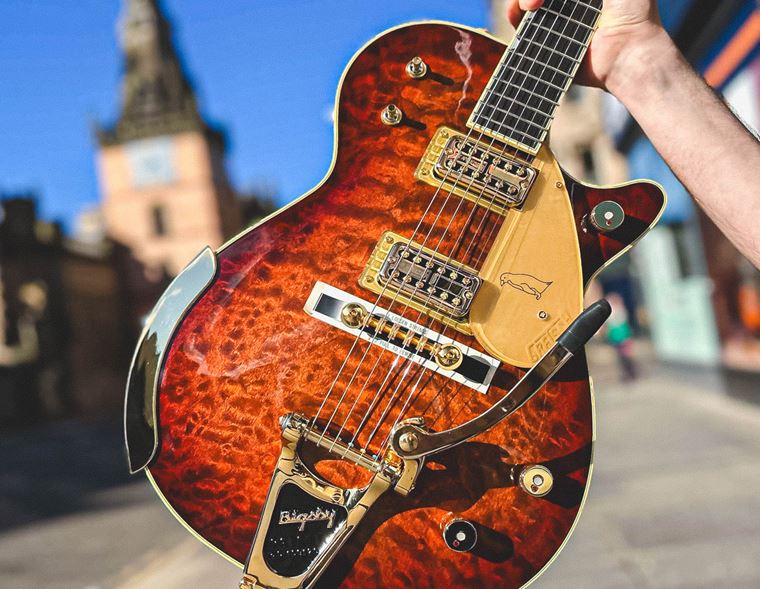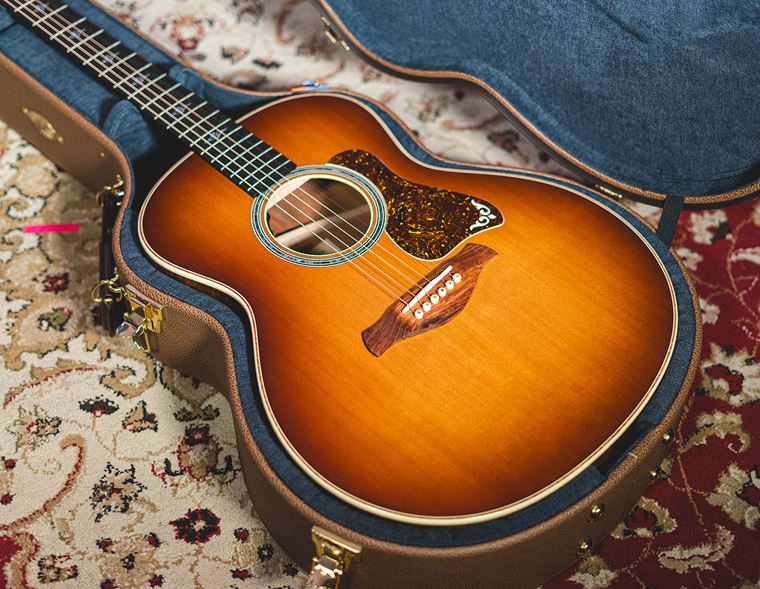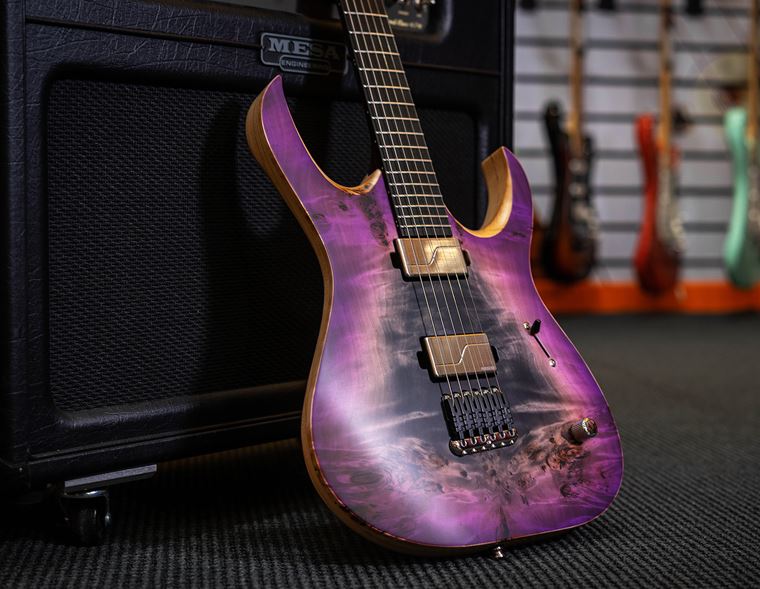The Complete Guide to TYLER GUITARS: Remembering James Tyler
Tyler guitars are unmistakable. From the headstock to the wild finishes, each James Tyler guitar is a functional piece of art. Since the 80s, rockstars, top session players and lovers of the electric guitar have flocked to Tyler’s Los Angeles studio to get themselves a piece of the magic.
Sadly, James passed away in August 2024, but his light shines still throughout the company he left behind. Tyler guitars continue to amaze, and as long-time dealers, we are as passionate about the brand as we ever were.
Because of this, I want to put out a complete guide to the Tyler brand. From the beginning, right up to the present day, it’s all here. If you want to know about James Tyler guitars, you’ve arrived at the correct place!
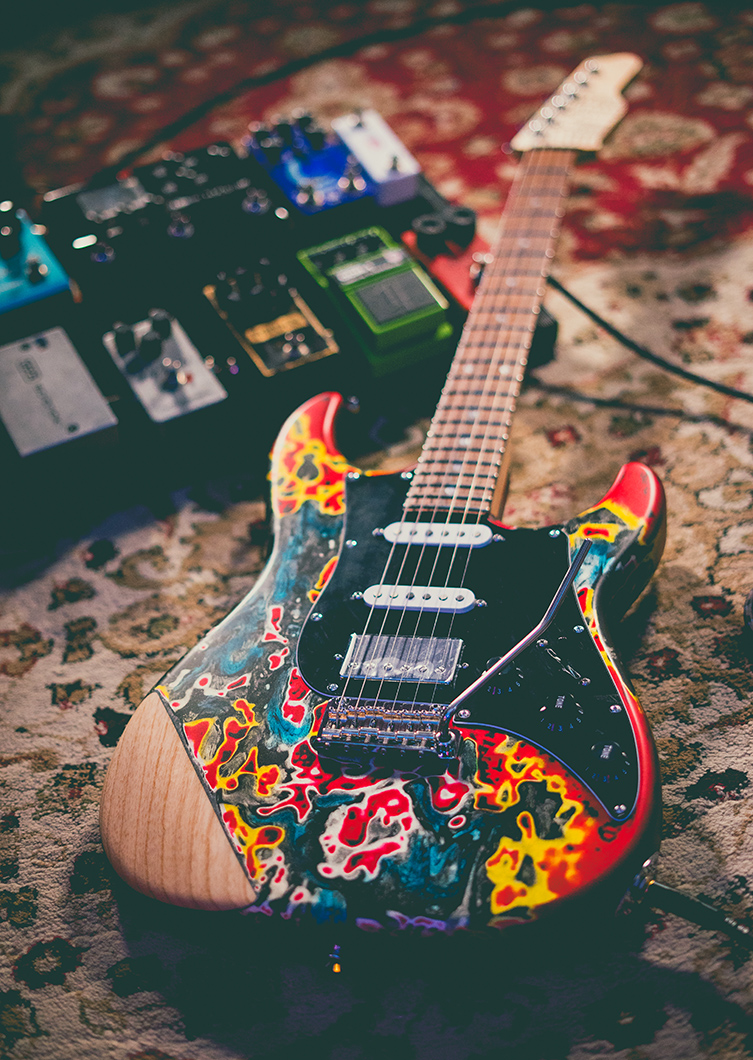
Contents
Early Days
- From repairs to custom builds
- Star of the Los Angeles session scene
James himself started out in the industry as many creative people do, repairing guitars and building one-off custom instruments. Firstly, it was for local players in the San Fernando valley, but as the 80s session scene took off, players began taking notice of Tyler’s high quality levels and eccentric styling. The Los Angeles scene was a prolific one for flashy players, and they needed similarly flashy instruments: Tyler obliged, and also took the opportunity to learn from the scene about just what guitarists needed and wanted. Names such as Dan Huff, Wayne Krantz and Mike Landau were quick to pick up on Tyler’s vibe, and soon he became one of the most respected luthiers in the business.
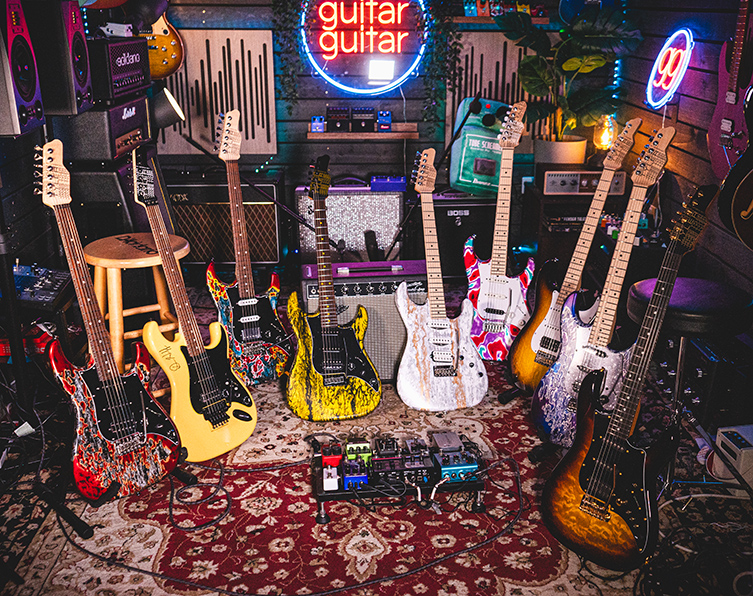
This was all based on word-of-mouth, and the guitars speaking for themselves: people saw other guitarists using them, asked to try them out, and subsequently ordered their own. Initially it was the session guys, but soon enough players from all genres and styles were after a Tyler Studio Elite, and it wasn’t (just) because of the cool finish: these guitars were the most meticulously built, most exactly designed and most effectively realised guitars on the market.
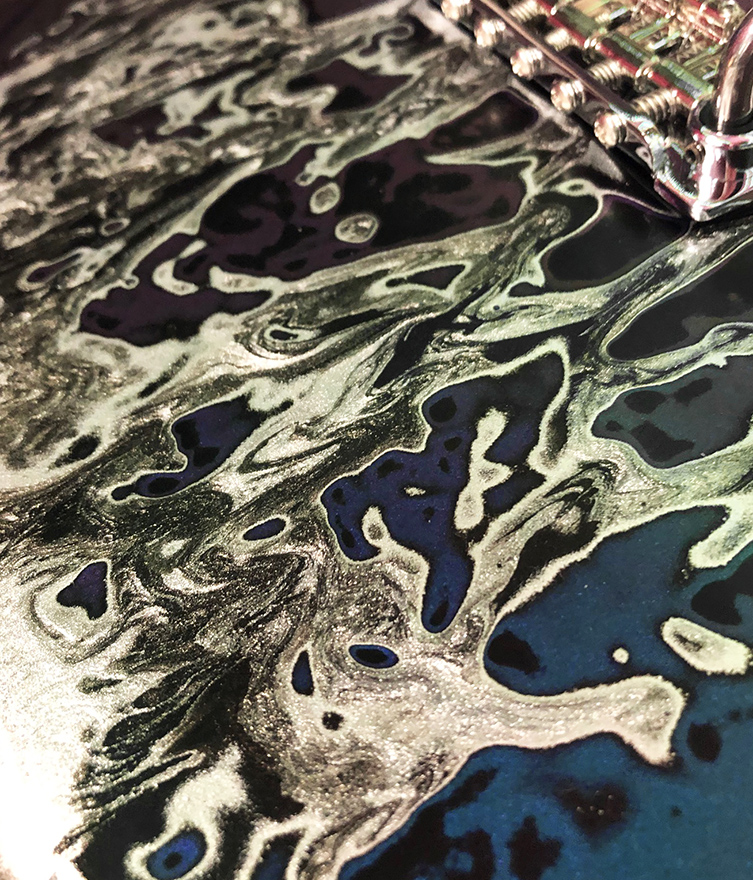
James Tyler
- Reseda is where it started
- Championed by Van Halen's Michael Anthony
James Tyler was of the Beatles generation (does that explain the psychedelic guitar finishes?), the Fab Four inspiring a young Tyler to begin a lifelong guitar journey. His natural inquisitiveness brought him to the notion of dismantling guitars, assessing and understanding what made them work. He was part of that late 70s Californian story of repair guys - like Wayne Charvel and Grover Jackson - whose forward-thinking attitude brought pioneering players their way.
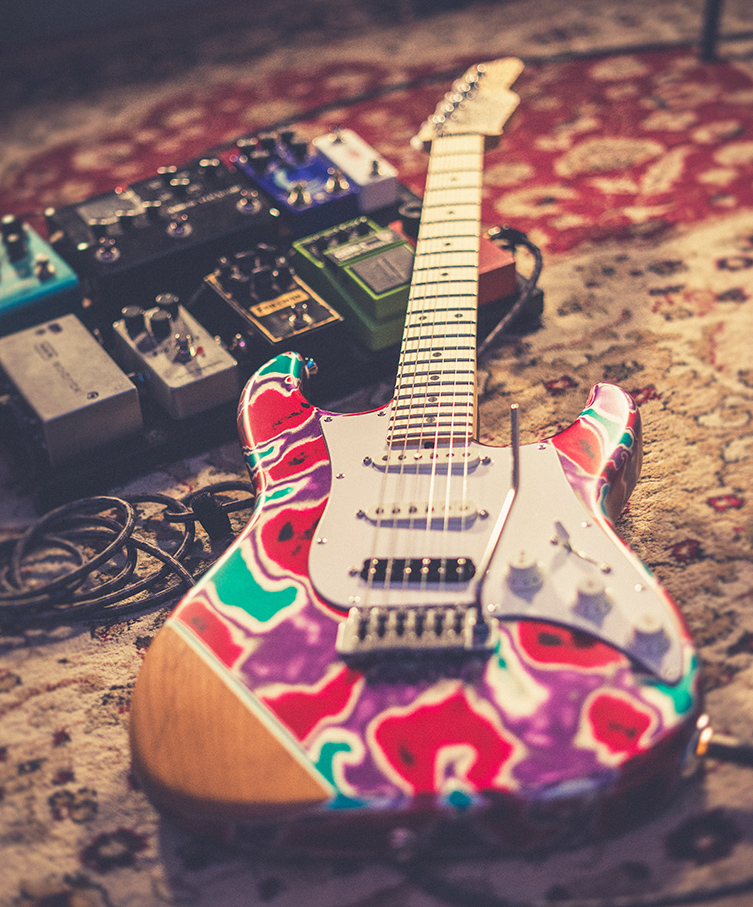
Whilst Charvel and Jackson operated out of Glendale and Pasadena, Tyler worked in nearby Reseda (home of the Karate Kid, film fans), first as repairman for Norman’s Rare Guitars, and then in 1980, his own business.
I mentioned the LA session players being quick on the draw for Tyler’s guitars: you’ll hear Tyler guitars on Michael Jackson’s Billie Jean, for instance, (thanks to guitarist David Williams) and also songs by Bob Dylan and Stevie Nicks, to name but a few.
Big names like Van Halen bassist Michael Anthony began ordering instruments with Tyler’s trademark Shmear finishes, further putting the brand on the map.
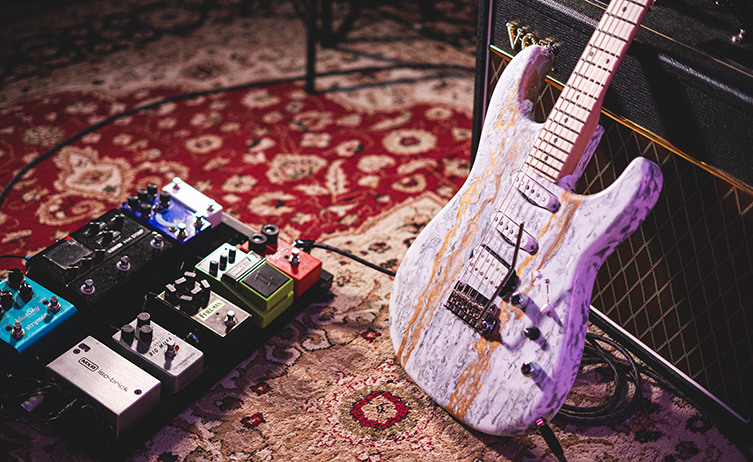
James Tyler Guitars
- Expressive and eccentric
- Recognisable from a long distance
- The styling is a mark of quality, noted worldwide
The two instant things you see when you check out a Tyler guitar: the finish and that headstock. The headstock (it’s meant to be a pointing hand, I think?) has been around since the Studio Elite was released in 1987 and has always been a little ‘marmite’ to guitar fans! There have been numerous guitar models available from Tyler over the years (the Mongoose is a favourite) but the Studio Elite is far and away the most well-known.
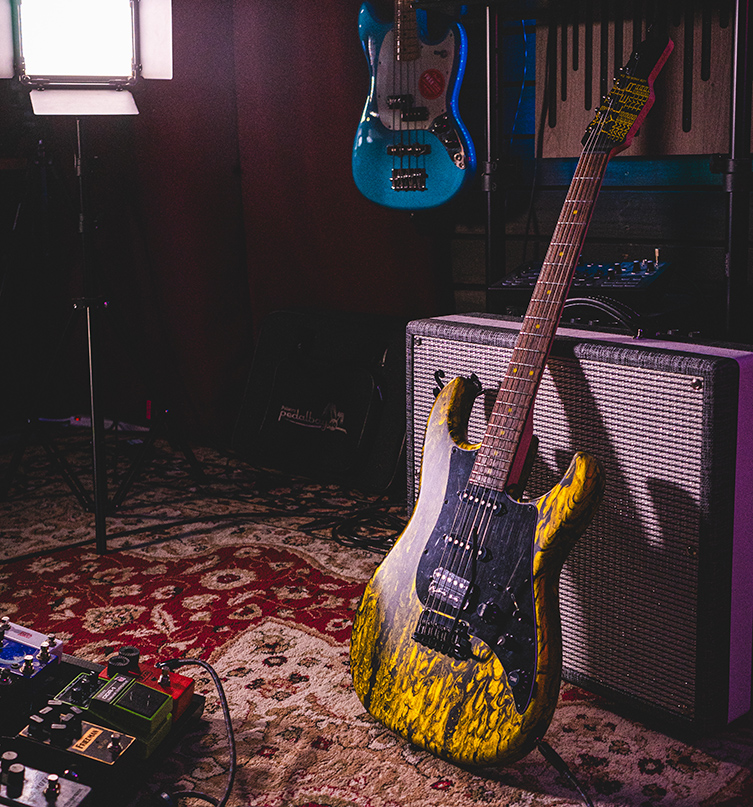
The Tyler Studio Elite
- The definitive Tyler Model
- Massively high qualty
- Extremely versatile
The Tyler Studio Elite is a boutique, expertly crafted superstrat with a highly distinctive look. Normally seen with an HSS pickup configuration (other configs are available), the Tyler Studio Elite matched its outlandish visuals with unparalleled build quality and feel.
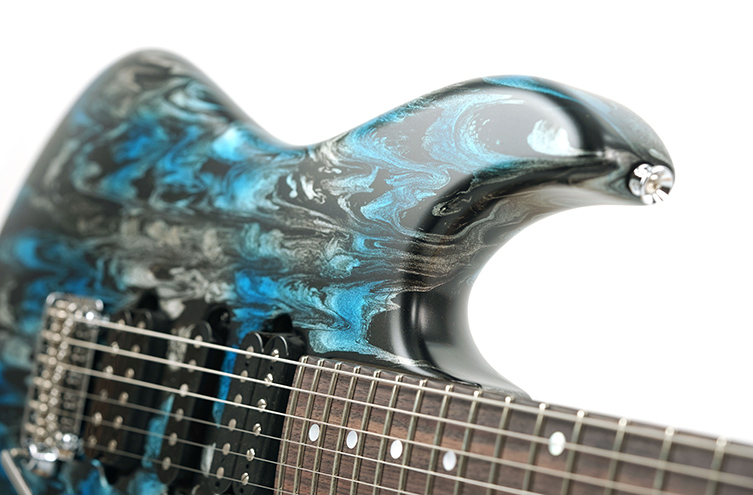
It also had another trick up its sleeve: an onboard mid boost circuit. It’s actually still a relatively uncommon thing, but having an effective, controllable boost right there at your fingertips when you need one is an enormously empowering thing for any guitarist.
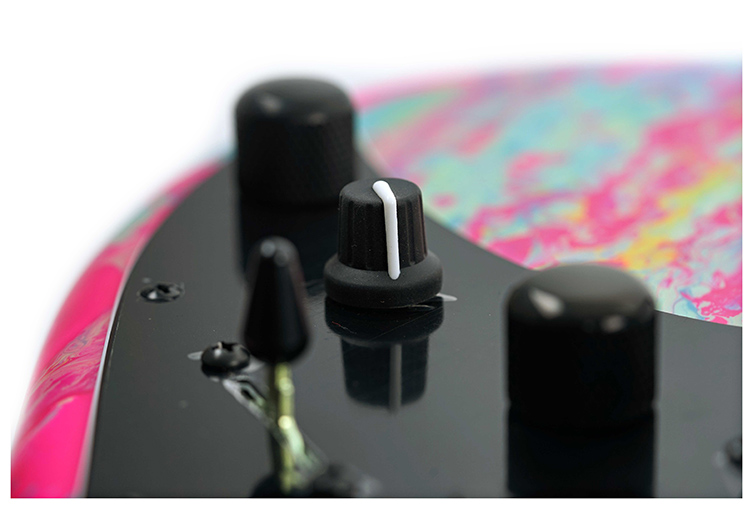
Alongside the headstock, the Studio Elite has a unique pickguard shape, furthering the distinctive, instantly recognisable look of the guitar.
Whilst certain variations have occurred since 1987, the Studio Elite is largely exactly as it was first designed. It’s a timeless guitar in a way, because it has always been outside of trends, appealing to any musician who loves quality and has a taste for larger-than-life looks.
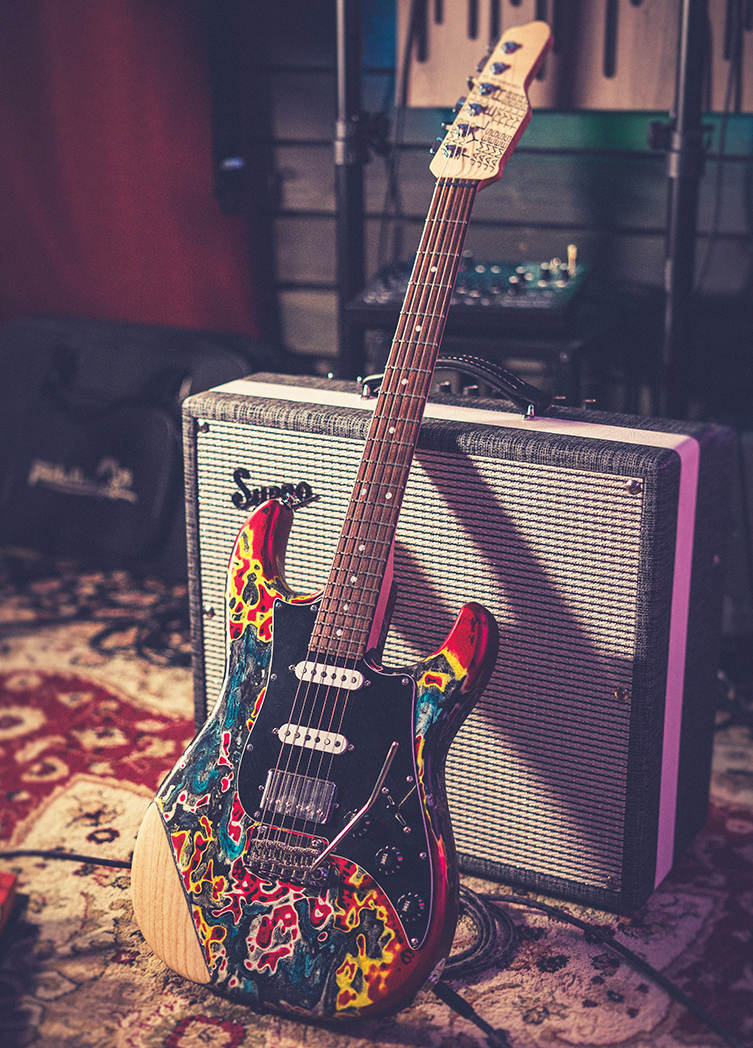
The Finishes
- Hugely secretive finishing techniques
- Everybody has a theory
- Nobody does 'em like Tyler
- Psychedelic Vomit, Shmear, Burning Water
The main type of special finish is Tyler’s ‘Shmear’ but before it came along, Tyler created the ‘psychedelic vomit’ finish as a sort of joke for session ace Michael Landau. Doubling down on the weirdness, another crazy looking experiment for Landau resulted in the famous Burning Water finish. Both of these are highly in demand, and so distinctively ‘Tyler’ that other manufacturers have largely kept away from replicating the look.
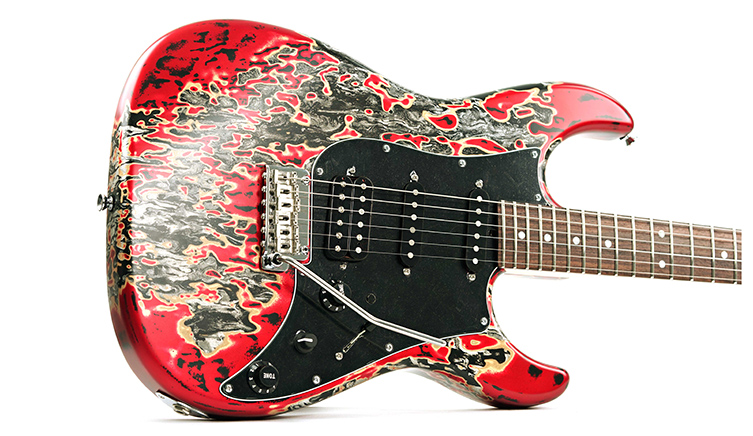
Is that because they don’t know how to do it? Maybe so! As mentioned, the process for creating a Burning Water finish - and the Shmear finishes that have come along since - is a closely-kept secret. People guess and DIY-ers do attempt to recreate the inimitable, chaotic look, but only Tyler manages to get the ingredients right.
As a long-time Tyler dealer, I know that the one thing they won’t share with us (or talk about at all, actually) is the process they use for these finishes. The internet is full of guesswork and speculation: I could only add my own guesses to those that exist, and in fact I feel like I want to keep myself open to the mystery of it all. I love not only how these guitars look, but also how little anyone can say - with authority - on how they are created.
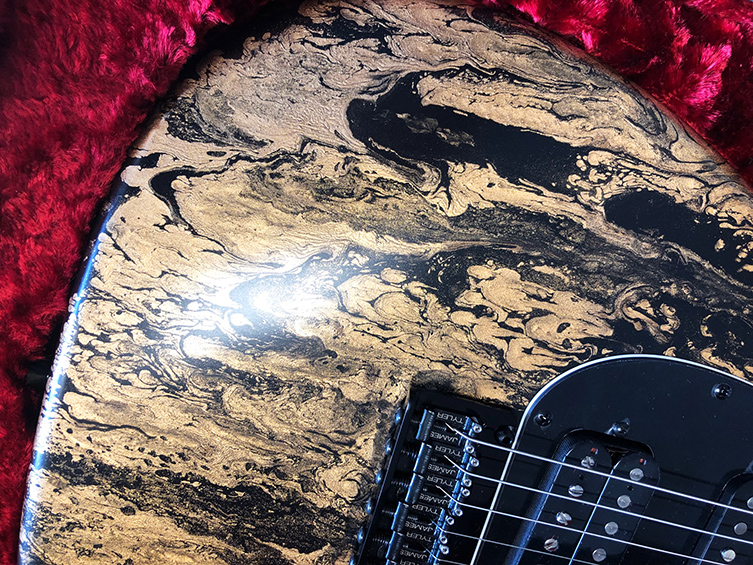
In fact, we recently received the first ever black and gold Shmear finish and it’s another spectacular reminder of the wonderful creativity that comes from James Tyler guitars.
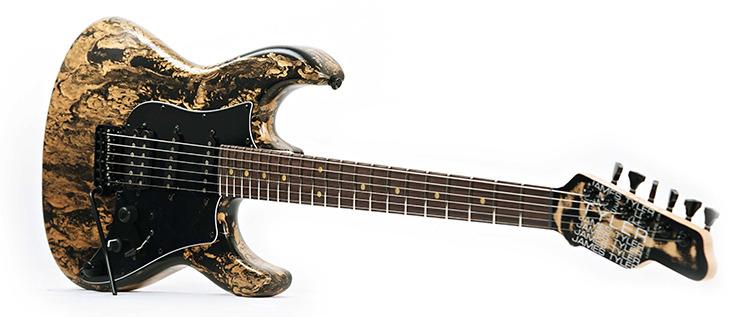
The Burning Water is relatively specific in terms of the colours used (though there are variations), but the Shmear is available in a veritable rainbow of colours from blues to whites to bright pink: check out the ‘Vice Shmear’ below, with no prizes for guessing the inspiration behind it!
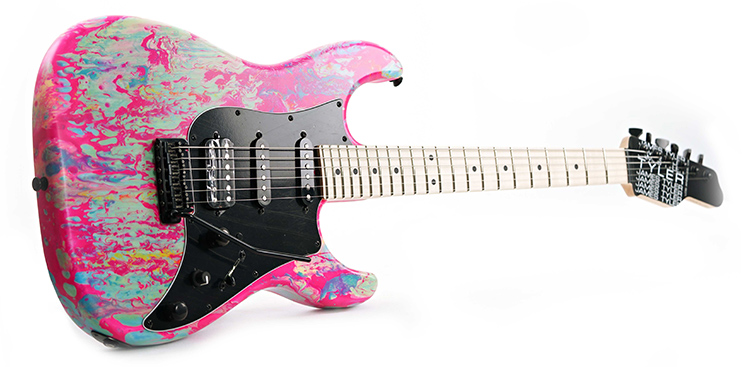
Tyler Japan and JTG
In recent years, Tyler have expanded their offerings in two ways. Firstly, we’ve had Tyler Japan, which is a small and dedicated team of master artisans who have been trained especially by James Tyler. This team creates a small number of finely crafted instruments, bearing not only the Tyler name but also those famous Schmear finishes! This is a more affordable way to get a Tyler guitar, whilst not compromising on the experience.
More recently again, a new sub brand of Chinese-made guitars have been carefully designed and brought to the market. Named JTG guitars, these are still considerably more than ‘affordable’, but they are a realistic price given the excellent quality control that exists here. Again, the hallmarks of the famous Tyler brand are here, though finishing and branding reflect a more ‘separate’ offering. They are related - and they are pretty amazing - but they are by no means the same as a US-made Tyler guitar.
Still, we’ve never had this much choice in terms of price points! Now, more people than ever can get actively involved in this very charismatic brand.
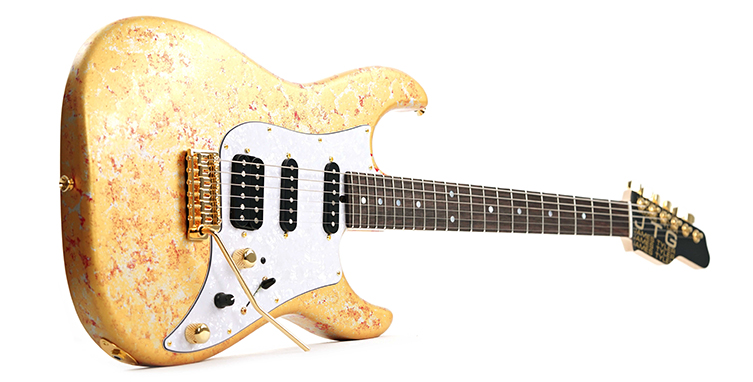
A Remarkable Talent
Over 35 years of the Studio Elite, and well over 40 for Tyler guitars in general; it’s history that has been written with precision, bold choices and very loud looking paint! There’s no brand like Tyler guitars, and there is no artist and creator like James Tyler. He’d be sorely missed, not just from people like us who love and appreciate his craft, but by the countless lives he touched and the people who loved him. His is a legacy that’s as significant as it is colourful, and this article is a small tribute to his greatness.
His work lives on though, not only with Tyler guitars but with JTG guitars too. To play them is to play some of the best guitars in the world.
Click to View our Tyler Guitars



